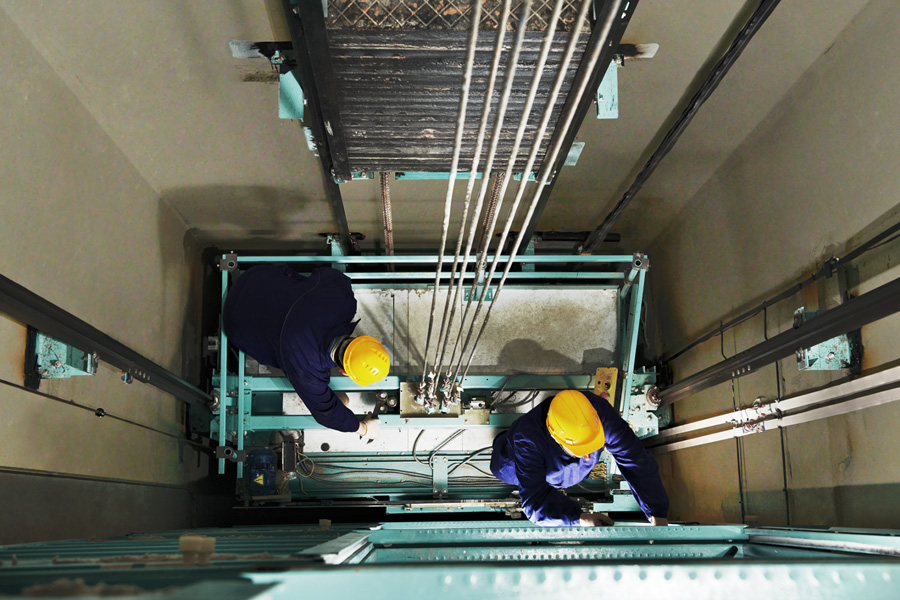
30
04 2023
Workflow Plan of Elevator Installation
Elevator installation is a technical process that must be meticulously planned and implemented. The installation of an elevator involves many steps in terms of both safety and functionality. This process is coordinated by the engineering and construction team, and each stage must be followed carefully. The general workflow plan for elevator installation is explained step by step below:
Elevator Installation Workflow Plan
1. Project and Preliminary Preparation Stage
Projecting and Exploration:
An elevator exploration is carried out for the building or structure where the installation will be made. At this stage, the dimensions of the elevator shaft, number of floors, stop points and purpose of use are determined.
The type of elevator to be used (people, cargo, service, etc.) is determined in line with the project engineers and customer needs.
Static and Dynamic Calculations:
Engineering calculations are made in accordance with the elevator carrying capacity of the building. These calculations are carried out according to safety standards and the elevator type.
Elevator Shaft and Shaft Controls:
The dimensions, structure, depth and ceiling height of the elevator shaft are checked. It is checked whether the existing structure is suitable for installation and adjustments are made if necessary.
Material and Equipment Supply:
The materials required for assembly (cabin, rails, motor, ropes, electrical components, etc.) are supplied. The materials are ordered and transported to the construction site.
2. Preparations Before Assembly
Arrangement of the Construction Site:
The area where the elevator assembly will be performed is prepared. Safety measures are taken in the assembly area and the area where the assembly team will work is arranged.
Installation of Assembly Equipment:
Cranes, platforms and other equipment required for assembly are brought to the construction site and installed. Height-working equipment is also prepared.
Preparation of Electrical and Mechanical Infrastructure:
The electrical and mechanical infrastructure of the elevator shaft is prepared. At this stage, electrical connection points, sockets and wiring arrangement are checked.
3. Assembly Phase
Installation of Well Rails and Counterweight System:
First, the rail systems are installed in the elevator shaft. The rails are the guides on which the cabin and counterweight will move.
The counterweight system is placed and securely fixed.
Installation of the Machine Room:
If there is a machine room in the building, the motor, brake systems and control panels are installed in this area. In systems without a machine room, the elevator motor is directly installed in the elevator shaft.
Cabin Installation:
The elevator car is placed on the rails and assembled. After the car is assembled, the elevator ropes and brake systems are installed.
Rope and Motor Connections:
The ropes that will move the elevator car up and down are placed and connected to the motor system. At this stage, the rope tension and connection safety are checked.
Installation of Door Systems:
Elevator doors are installed on each floor. The landing doors and the car doors are adjusted to be synchronized.
The operation of the landing doors and car doors is tested. In addition, security locks are installed.
Completion of the Electrical Installation:
The electrical connections of the elevator are made. The electric motor, control panel and call buttons are connected.
Test Run of the Elevator:
After the initial assembly is completed, the elevator is run for testing. This test checks whether the elevator is working properly, whether the brakes and safety systems are working properly.
4. Test and Safety Checks
Load Test:
The elevator is operated by loading weights suitable for its carrying capacity. This test checks whether the elevator is working properly for its carrying capacity.
Test of Safety Systems:
All safety equipment of the elevator such as emergency brake, door sensors, alarm systems are tested. Adjustments are made if necessary.
Speed and Balance Check:
The elevator's speed sensors and balance system are checked. The cabin should move smoothly between floors and stop without shaking.